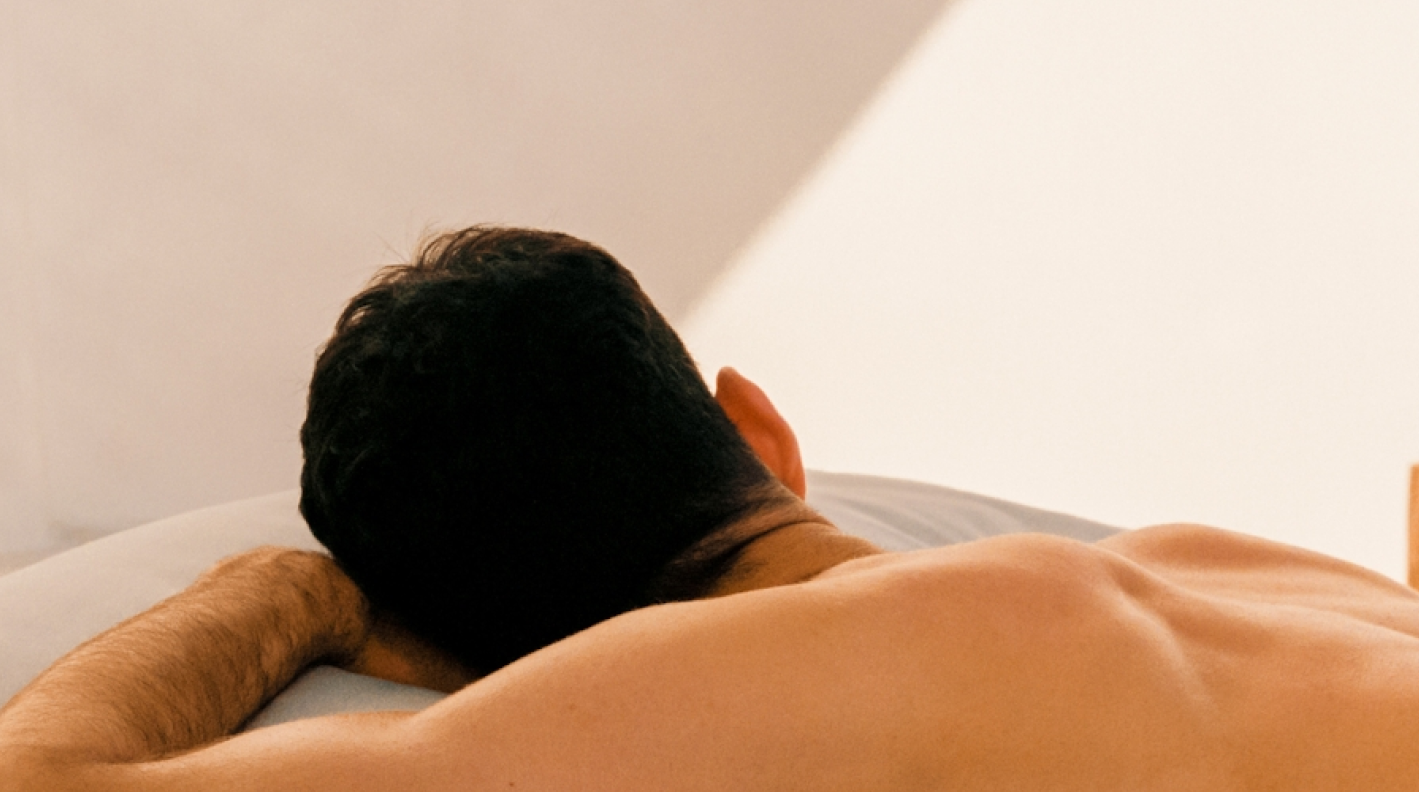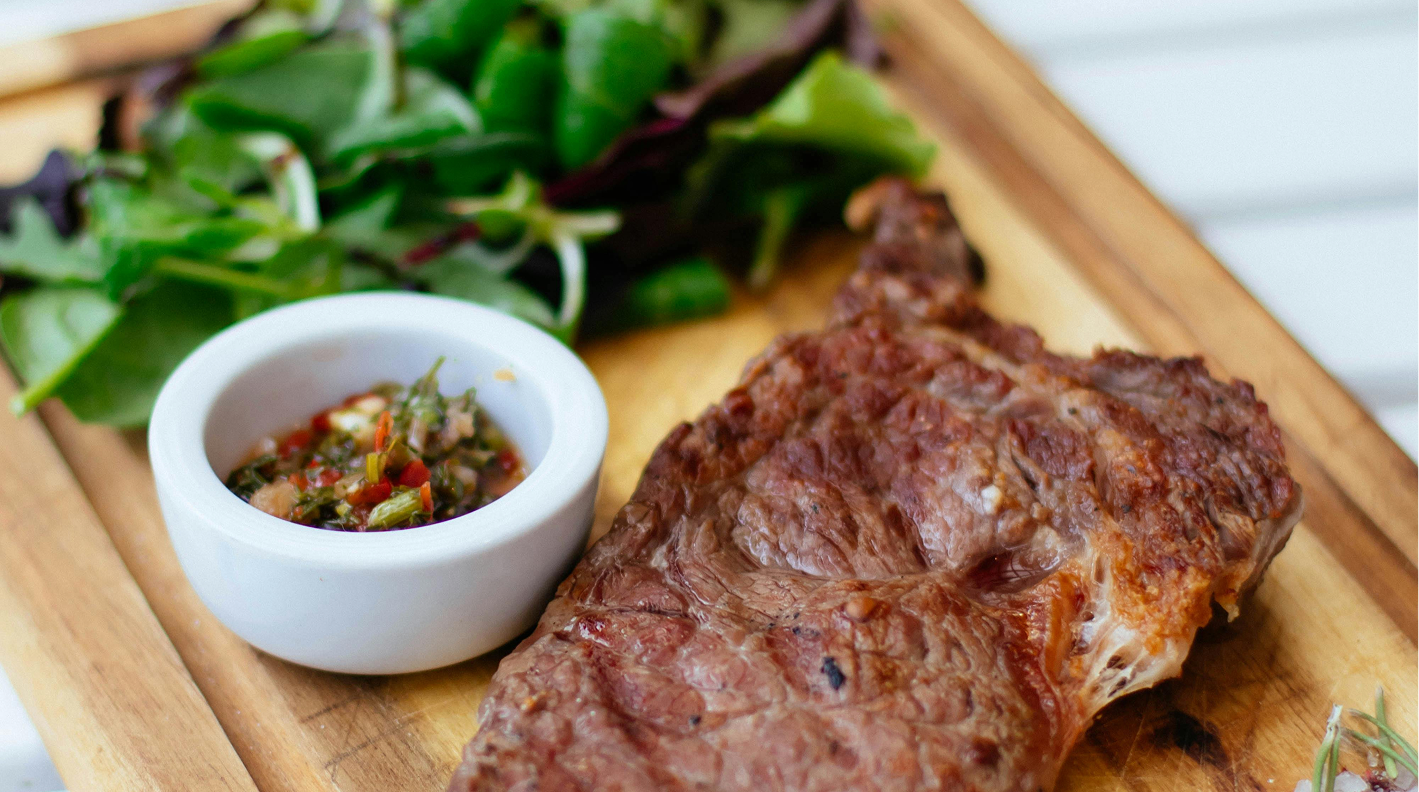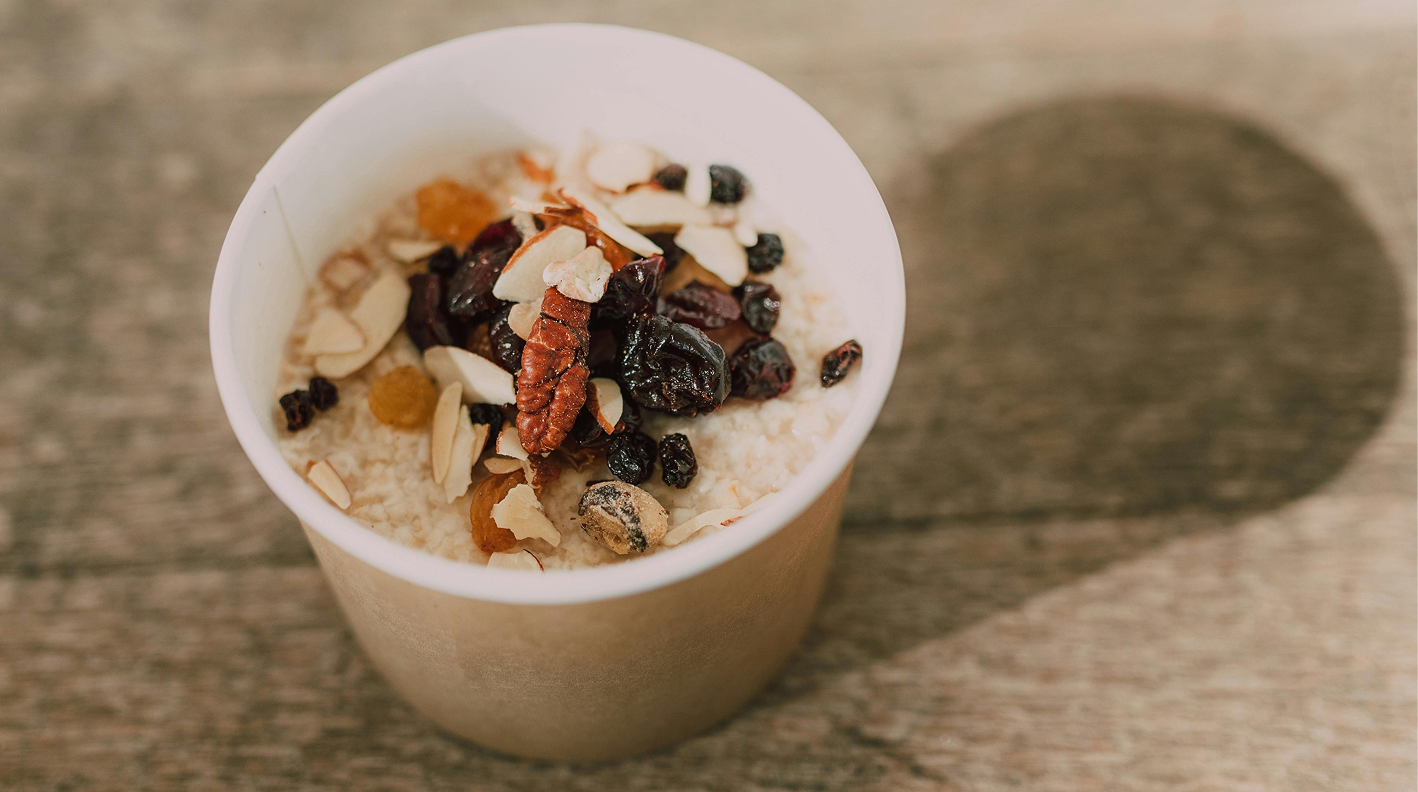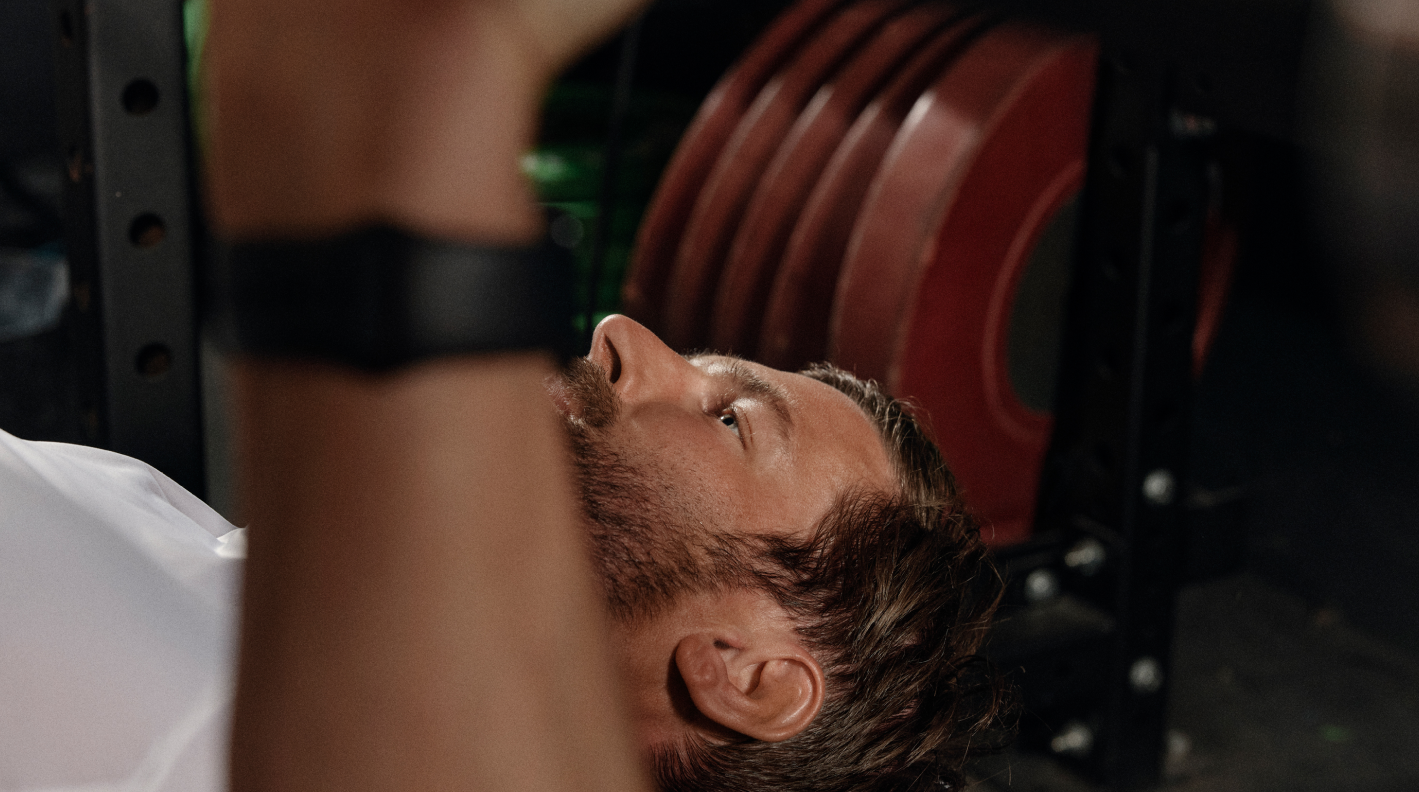Fact or fad: Can ice baths help you lose weight?

Key takeaways
- Ice baths activate brown fat and boost calorie burn, supporting metabolic health and recovery.
- Regular cold exposure can improve insulin sensitivity, lower cortisol, and enhance resilience.
- Sustainable weight loss comes from combining cold therapy with smart nutrition, exercise, and recovery habits.
Ice baths are the practice of immersing yourself in cold water (under 10°C) as a form of cold exposure. The goal is to stimulate a beneficial stress response called hormesis, which can strengthen your body's resilience, circulation, and recovery over time.
This practice became popularised by Wim Hof — famously known as The Iceman — and in recent years, it has become a staple among gym-goers and wellness enthusiasts alike.
If you're starting a body transformation journey and are looking for effective weight loss strategies, you too may be considering adding cold plunges to your routine. But do they actually help you lose weight? Let's find out.
The benefits of ice baths for weight loss
Ice baths can be a valuable addition to your weight loss plan, as they can help:
Increase calorie burn
When exposed to cold temperatures, your body activates brown adipose tissue (BAT), which burns calories to generate heat.
Plus, once you step out of the bath, your body needs to work extra hard to get you back to your normal temperature, which also leads to a temporary increase in calorie burn. This is the long and short of it, but we'll explain it all further in just a bit.
Enhance recovery
Cold plunges can indirectly help with weight loss by optimising your recovery between workouts.
The cold temperature constricts your blood vessels and reduces blood flow, which helps to minimise muscle inflammation, soreness, and stiffness — much needed the day after an intense strength training or HITT session.
Additionally, as your body warms up after an ice bath, your blood flow starts going back up, flushing out metabolic waste products like lactic acid and supporting muscle repair and regeneration.
This makes it easier to keep up with a regular exercise routine, train at higher intensities, and ultimately, increase your calories burned over time.
Improve insulin sensitivity
According to some studies, regular ice baths increase the production of a hormone called adiponectin, which plays a key role in preventing diabetes [1].
As a result, this practice can lower your insulin levels, boost your insulin sensitivity, and further support metabolic health and fat loss.
Lower cortisol levels
Another hormone that ice baths affect is cortisol, also known as the stress hormone.
Incorporating ice baths as a regular component of your lifestyle can help your body adapt to stress. This is important for weight loss because high cortisol levels are linked to fat accumulation, especially around your midsection area.
Plus, high stress levels can often lead to emotional eating — but adopting relaxing habits such as cold plunging can help clear your mind and avoid overeating.
Keep in mind that cold therapy alone won't see you drop a significant amount of pounds.
An effective body transformation and weight loss journey needs to be all-encompassing. Eating a healthy diet, exercising regularly, getting enough sleep, and staying hydrated are all key components of a balanced approach to weight loss.
At Compound, we’re dedicated to helping you live better, for longer. Compound's Body Transformation Programme combines medical treatments, prescriber support and personalised guidance to help you not just lose weight but completely transform your body and health for life.
- Breakthrough medication: Lose up to 21% of your body weight in 72 weeks with once-weekly, clinically proven treatment. It keeps you feeling fuller for longer, so eating less feels natural. Pair them with the Compound Code to lock results in for good.
- Compound Code: Our medication creates opportunity — Compound helps you seize it. Our proven system makes your treatment work harder. The Compound Code builds the muscle, energy, and fitness that medication alone can't deliver. Our holistic approach transforms not just how you look, but how you feel and function daily. So when you eventually finish treatment, your results don't disappear with it.
Do ice baths burn fat?
We explained briefly how ice baths can affect your caloric burn, but let's explore this in more detail. Similar to high-intense interval training (HIIT), cold exposure triggers a hormone called irisin, which helps turn white fat into brown fat [2][3].
White fat works as an energy reserve. It accumulates calories for later use and it is your body's main source of energy, while also providing insulation and cushioning for your organs.
Though necessary, if you have too much — particularly visceral fat around your midsection — your risk of health issues like obesity, type 2 diabetes, and cardiovascular issues increases.
Brown fat, on the other hand, plays a key role in generating heat through a process named thermogenesis. It can be activated in response to cold temperatures — what's referred to as cold thermogenesis — and it burns stored calories as a way to produce heat.
Increasing your brown fat activity is an effective way of improving your metabolic health and increasing energy expenditure and fat burning.
Other health benefits of ice baths
The health benefits of cold plunging go way beyond supporting your weight and fat loss efforts. Adopting this practice can also:
- Reduce inflammation
- Improve your mood and mental clarity
- Improve circulation and support your cardiovascular health
- Boost your immune system
- Help you sleep better
- Improve your skin and hair texture (especially if you have particularly oily skin!)
- Help you manage pain from chronic conditions
How long should you ice bath for?
Cold water therapy is pretty straightforward — simply submerge your body in ice water, aim for 2-3 minutes at a time and do a few cycles. After roughly 5-10 minutes of cold water exposure, as your core body temperature lowers, your blood vessels start to widen [4].
Research on the relationship between duration and results is still ongoing; however, Dr Susanna Soberg recommends 11 minutes of cold exposure in total across a week [5].
"As little as 20 seconds in a 4-degree ice bath can lead to a 2-3 times increase in your noradrenaline," said Compound's Program Lead, Dan Cable.
"You could go at a higher temperature, up to say 10 degrees and go for a longer period of time like 2-5 minutes and get some benefit too but the mental acuity that you feel when you're in and after the ice
bath is largely driven by the adrenaline and somewhat the dopamine effect as well."
If the ice bath you're using is around 4 degrees, Cable recommends staying in the water for a minimum of 20 seconds. If it's closer to 10 degrees, try to stay submerged for 2-3 minutes. If you're dabbling in a cold shower, try to stay under the water for up to 5 minutes, which will help you feel activated and alert.
Getting started with cold water immersion
Keen to give cold plunging a go? Here are some tips on how to get started and better tolerate the ice-cold temperatures:
Morning cold showers
It's not exactly hardcore but it’s the easiest way to get started, gain a dopamine kick, and start working your way up to an ice bath for the full range of benefits. Plus, you don't need to have your own ice bath to get started.
There’s something about the momentum and mental grit (’ top-down control’) you gain from starting the day this way — eat the frog!
Prime with a sauna first
Although there are limited studies on hot-cold combination therapy, you might find it easier to begin tolerating the ice bath after a sauna.
The heat triggers vasopressin and activates the parasympathetic state (calm) in our nervous system, which can help you feel more relaxed and ready for the cold [6].
Start small
Start with 60 seconds and do 2-3 rounds, progressively ramping up to 2-3 minutes over time.
Trick your senses
There’s a higher density of cold-sensitive nerves in our fingers, toes, ears, and nose so try keeping your hands above the surface to improve your ability to tolerate cold exposure for longer.
Plunge your head under
Use the mammalian dive reflex to activate the parasympathetic state in your central nervous system, which will help you tolerate the cold longer. To do this, simply breathe deeply through your diaphragm (your belly), rather than shallow chest breathing [7].
Cable also recommends holding your hands above the water, as this should help improve your tolerance to the cold and help you stay put for a little longer.
Waterline up to the neck
Cold exposure on your chest and your neck will help improve the function of the vagal nerve, the biggest cranial nerve in the body, which connects your brain to your gut.
By stimulating the vagus nerve, you can increase heart rate variability (HRV) and lower your resting heart rate, which helps your body better handle the cold [8].
Always end on the ice bath
Raise your body temperature naturally and avoid a hot shower (or going back into the sauna) to maximise the benefits — the shiver is a key trigger for adiponectin and irisin.
When not to ice bath
Sustained cold exposure after hypertrophy or HIIT training is sub-optimal as this will blunt the pro-adaptation inflammation that is triggered by intense stimulus [9].
Prolonged cold immersion in the evening may overly activate your energy systems and inhibit sleep onset, so be guided by your body.
We recommend taking ice baths on rest days, particularly in the morning, so you gain all the benefits of increased energy and focus. Stack with a Zone 1 active recovery session to get the best of both recovery protocols [10].
Cable also recommends speaking to your doctor if you have a heart condition or the like.
"It's a massive stress on the body so if you've got a known cardiac condition, you really should be careful and speak to your specialist before you do something like that because it's a massive vasoconstrictor and it increases your blood pressure," said Cable.
Remember you can do an ice bath at home, gain cold exposure by swimming in winter, or have cold showers, but the colder the better if you want more profound results.
Ice baths are the practice of immersing yourself in cold water (under 10°C) as a form of cold exposure. The goal is to stimulate a beneficial stress response called hormesis, which can strengthen your body's resilience, circulation, and recovery over time.
This practice became popularised by Wim Hof — famously known as The Iceman — and in recent years, it has become a staple among gym-goers and wellness enthusiasts alike.
If you're starting a body transformation journey and are looking for effective weight loss strategies, you too may be considering adding cold plunges to your routine. But do they actually help you lose weight? Let's find out.
The benefits of ice baths for weight loss
Ice baths can be a valuable addition to your weight loss plan, as they can help:
Increase calorie burn
When exposed to cold temperatures, your body activates brown adipose tissue (BAT), which burns calories to generate heat.
Plus, once you step out of the bath, your body needs to work extra hard to get you back to your normal temperature, which also leads to a temporary increase in calorie burn. This is the long and short of it, but we'll explain it all further in just a bit.
Enhance recovery
Cold plunges can indirectly help with weight loss by optimising your recovery between workouts.
The cold temperature constricts your blood vessels and reduces blood flow, which helps to minimise muscle inflammation, soreness, and stiffness — much needed the day after an intense strength training or HITT session.
Additionally, as your body warms up after an ice bath, your blood flow starts going back up, flushing out metabolic waste products like lactic acid and supporting muscle repair and regeneration.
This makes it easier to keep up with a regular exercise routine, train at higher intensities, and ultimately, increase your calories burned over time.
Improve insulin sensitivity
According to some studies, regular ice baths increase the production of a hormone called adiponectin, which plays a key role in preventing diabetes [1].
As a result, this practice can lower your insulin levels, boost your insulin sensitivity, and further support metabolic health and fat loss.
Lower cortisol levels
Another hormone that ice baths affect is cortisol, also known as the stress hormone.
Incorporating ice baths as a regular component of your lifestyle can help your body adapt to stress. This is important for weight loss because high cortisol levels are linked to fat accumulation, especially around your midsection area.
Plus, high stress levels can often lead to emotional eating — but adopting relaxing habits such as cold plunging can help clear your mind and avoid overeating.
Keep in mind that cold therapy alone won't see you drop a significant amount of pounds.
An effective body transformation and weight loss journey needs to be all-encompassing. Eating a healthy diet, exercising regularly, getting enough sleep, and staying hydrated are all key components of a balanced approach to weight loss.
At Compound, we’re dedicated to helping you live better, for longer. Compound's Body Transformation Programme combines medical treatments, prescriber support and personalised guidance to help you not just lose weight but completely transform your body and health for life.
- Breakthrough medication: Lose up to 21% of your body weight in 72 weeks with once-weekly, clinically proven treatment. It keeps you feeling fuller for longer, so eating less feels natural. Pair them with the Compound Code to lock results in for good.
- Compound Code: Our medication creates opportunity — Compound helps you seize it. Our proven system makes your treatment work harder. The Compound Code builds the muscle, energy, and fitness that medication alone can't deliver. Our holistic approach transforms not just how you look, but how you feel and function daily. So when you eventually finish treatment, your results don't disappear with it.
Do ice baths burn fat?
We explained briefly how ice baths can affect your caloric burn, but let's explore this in more detail. Similar to high-intense interval training (HIIT), cold exposure triggers a hormone called irisin, which helps turn white fat into brown fat [2][3].
White fat works as an energy reserve. It accumulates calories for later use and it is your body's main source of energy, while also providing insulation and cushioning for your organs.
Though necessary, if you have too much — particularly visceral fat around your midsection — your risk of health issues like obesity, type 2 diabetes, and cardiovascular issues increases.
Brown fat, on the other hand, plays a key role in generating heat through a process named thermogenesis. It can be activated in response to cold temperatures — what's referred to as cold thermogenesis — and it burns stored calories as a way to produce heat.
Increasing your brown fat activity is an effective way of improving your metabolic health and increasing energy expenditure and fat burning.
Other health benefits of ice baths
The health benefits of cold plunging go way beyond supporting your weight and fat loss efforts. Adopting this practice can also:
- Reduce inflammation
- Improve your mood and mental clarity
- Improve circulation and support your cardiovascular health
- Boost your immune system
- Help you sleep better
- Improve your skin and hair texture (especially if you have particularly oily skin!)
- Help you manage pain from chronic conditions
How long should you ice bath for?
Cold water therapy is pretty straightforward — simply submerge your body in ice water, aim for 2-3 minutes at a time and do a few cycles. After roughly 5-10 minutes of cold water exposure, as your core body temperature lowers, your blood vessels start to widen [4].
Research on the relationship between duration and results is still ongoing; however, Dr Susanna Soberg recommends 11 minutes of cold exposure in total across a week [5].
"As little as 20 seconds in a 4-degree ice bath can lead to a 2-3 times increase in your noradrenaline," said Compound's Program Lead, Dan Cable.
"You could go at a higher temperature, up to say 10 degrees and go for a longer period of time like 2-5 minutes and get some benefit too but the mental acuity that you feel when you're in and after the ice
bath is largely driven by the adrenaline and somewhat the dopamine effect as well."
If the ice bath you're using is around 4 degrees, Cable recommends staying in the water for a minimum of 20 seconds. If it's closer to 10 degrees, try to stay submerged for 2-3 minutes. If you're dabbling in a cold shower, try to stay under the water for up to 5 minutes, which will help you feel activated and alert.
Getting started with cold water immersion
Keen to give cold plunging a go? Here are some tips on how to get started and better tolerate the ice-cold temperatures:
Morning cold showers
It's not exactly hardcore but it’s the easiest way to get started, gain a dopamine kick, and start working your way up to an ice bath for the full range of benefits. Plus, you don't need to have your own ice bath to get started.
There’s something about the momentum and mental grit (’ top-down control’) you gain from starting the day this way — eat the frog!
Prime with a sauna first
Although there are limited studies on hot-cold combination therapy, you might find it easier to begin tolerating the ice bath after a sauna.
The heat triggers vasopressin and activates the parasympathetic state (calm) in our nervous system, which can help you feel more relaxed and ready for the cold [6].
Start small
Start with 60 seconds and do 2-3 rounds, progressively ramping up to 2-3 minutes over time.
Trick your senses
There’s a higher density of cold-sensitive nerves in our fingers, toes, ears, and nose so try keeping your hands above the surface to improve your ability to tolerate cold exposure for longer.
Plunge your head under
Use the mammalian dive reflex to activate the parasympathetic state in your central nervous system, which will help you tolerate the cold longer. To do this, simply breathe deeply through your diaphragm (your belly), rather than shallow chest breathing [7].
Cable also recommends holding your hands above the water, as this should help improve your tolerance to the cold and help you stay put for a little longer.
Waterline up to the neck
Cold exposure on your chest and your neck will help improve the function of the vagal nerve, the biggest cranial nerve in the body, which connects your brain to your gut.
By stimulating the vagus nerve, you can increase heart rate variability (HRV) and lower your resting heart rate, which helps your body better handle the cold [8].
Always end on the ice bath
Raise your body temperature naturally and avoid a hot shower (or going back into the sauna) to maximise the benefits — the shiver is a key trigger for adiponectin and irisin.
When not to ice bath
Sustained cold exposure after hypertrophy or HIIT training is sub-optimal as this will blunt the pro-adaptation inflammation that is triggered by intense stimulus [9].
Prolonged cold immersion in the evening may overly activate your energy systems and inhibit sleep onset, so be guided by your body.
We recommend taking ice baths on rest days, particularly in the morning, so you gain all the benefits of increased energy and focus. Stack with a Zone 1 active recovery session to get the best of both recovery protocols [10].
Cable also recommends speaking to your doctor if you have a heart condition or the like.
"It's a massive stress on the body so if you've got a known cardiac condition, you really should be careful and speak to your specialist before you do something like that because it's a massive vasoconstrictor and it increases your blood pressure," said Cable.
Remember you can do an ice bath at home, gain cold exposure by swimming in winter, or have cold showers, but the colder the better if you want more profound results.
- https://pubmed.ncbi.nlm.nih.gov/19303978/
- https://pubmed.ncbi.nlm.nih.gov/22237023/
- https://www.ncbi.nlm.nih.gov/pmc/articles/PMC7045287/?_kx=p3YMvQBX-mhsz5KpduV0l1t1ipdPUomqXSAbuS6H10E%3D.MHU8j4
- https://www.ncbi.nlm.nih.gov/pmc/articles/PMC9518606/
- https://pubmed.ncbi.nlm.nih.gov/34755128/
- https://pubmed.ncbi.nlm.nih.gov/29480411/
- https://www.ncbi.nlm.nih.gov/pmc/articles/PMC3768097/?_kx=p3YMvQBX-mhsz5KpduV0l1t1ipdPUomqXSAbuS6H10E%3D.MHU8j4
- https://www.ncbi.nlm.nih.gov/pmc/articles/PMC6334714/?_kx=p3YMvQBX-mhsz5KpduV0l1t1ipdPUomqXSAbuS6H10E%3D.MHU8j4
- https://www.ncbi.nlm.nih.gov/pmc/articles/PMC4594298/?_kx=p3YMvQBX-mhsz5KpduV0l1t1ipdPUomqXSAbuS6H10E%3D.MHU8j4
- https://physoc.onlinelibrary.wiley.com/doi/epdf/10.1113/JP272881?_kx=p3YMvQBX-mhsz5KpduV0l1t1ipdPUomqXSAbuS6H10E%3D.MHU8j4












